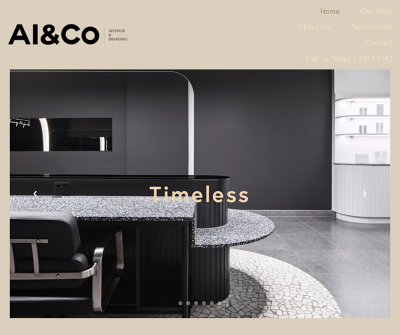The Rise of Open Kitchens: How Transparent Dining Enhances Customer Experience
Open kitchens have emerged as a game-changing trend in the world of hospitality interior design. Gone are the days when restaurant kitchens were hidden behind walls, leaving customers to wonder about the magic happening behind closed doors. Today, transparency is key, and open kitchen concepts are transforming dining experiences, bringing a new level of trust, engagement, and sensory delight to patrons.
Why Open Kitchens Are Gaining Popularity
Building Trust and Authenticity
Customers today are more conscious than ever about the quality of their food, hygiene standards, and preparation processes. An open kitchen eliminates the mystery and reassures diners that their meal is prepared with care and cleanliness. This transparency builds credibility, making it a preferred design choice for many modern restaurants.
Enhancing Customer Engagement
Watching chefs in action adds an element of entertainment to the dining experience. Whether it's the rhythmic chopping of ingredients, the dramatic flames of a wok, or the artful plating of dishes, open kitchens create a visually captivating experience. This engagement makes dining more interactive and memorable.
Creating a Multi-Sensory Experience
Open kitchens stimulate multiple senses at once. Guests can see their food being prepared, hear the sizzling of a grill, and smell the aroma of fresh ingredients before their meal even arrives. This immersive experience enhances anticipation and enjoyment.
Encouraging Efficient Operations
Since everything is visible, restaurant staff are encouraged to maintain high levels of cleanliness, organisation, and professionalism. It fosters a culture of accountability, ensuring that chefs and kitchen staff always perform at their best.
Designing an Effective Open Kitchen
To make an open kitchen truly work, hospitality interior designers in Sydney and worldwide focus on strategic layouts, high-quality materials, and efficient ventilation. Here are some key considerations:
Smart Layouts: The design must balance functionality and aesthetics, ensuring a seamless workflow while being visually appealing.
Noise and Odor Control: Effective ventilation systems, soundproofing materials, and controlled airflow prevent overwhelming the dining space.
Safety Measures: Chefs work with hot surfaces and sharp tools, so the kitchen layout should prioritise safety while maintaining an engaging view.
Aesthetic Appeal: Stainless steel surfaces, glass partitions, and stylish shelving add to the visual appeal of an open kitchen.
The Future of Open Kitchens
With customers seeking more authentic dining experiences, open kitchens are expected to become even more popular. This concept is particularly beneficial for restaurants that focus on fresh, high-quality ingredients and interactive cooking styles, such as sushi bars, pizzerias, and fine-dining establishments. An interior designer will help fulfill this design.
If you're a restaurant owner considering an open kitchen, collaborating with hospitality interior designers near me can help ensure the design is both functional and visually striking. The right interior design choices can elevate the guest experience while enhancing your brand's reputation for transparency and quality. In an era where experience is as important as the food itself, open kitchens are revolutionising the way people dine, offering an immersive and unforgettable culinary journey.
The author is a certified interior designer who has worked upon multiple interior design projects for commercial and residential properties. He often writes articles on interior design in Sydney for various online publications. Visit https://www.alandcohausofdesign.com/
Why Open Kitchens Are Gaining Popularity
Building Trust and Authenticity
Customers today are more conscious than ever about the quality of their food, hygiene standards, and preparation processes. An open kitchen eliminates the mystery and reassures diners that their meal is prepared with care and cleanliness. This transparency builds credibility, making it a preferred design choice for many modern restaurants.
Enhancing Customer Engagement
Watching chefs in action adds an element of entertainment to the dining experience. Whether it's the rhythmic chopping of ingredients, the dramatic flames of a wok, or the artful plating of dishes, open kitchens create a visually captivating experience. This engagement makes dining more interactive and memorable.
Creating a Multi-Sensory Experience
Open kitchens stimulate multiple senses at once. Guests can see their food being prepared, hear the sizzling of a grill, and smell the aroma of fresh ingredients before their meal even arrives. This immersive experience enhances anticipation and enjoyment.
Encouraging Efficient Operations
Since everything is visible, restaurant staff are encouraged to maintain high levels of cleanliness, organisation, and professionalism. It fosters a culture of accountability, ensuring that chefs and kitchen staff always perform at their best.
Designing an Effective Open Kitchen
To make an open kitchen truly work, hospitality interior designers in Sydney and worldwide focus on strategic layouts, high-quality materials, and efficient ventilation. Here are some key considerations:
Smart Layouts: The design must balance functionality and aesthetics, ensuring a seamless workflow while being visually appealing.
Noise and Odor Control: Effective ventilation systems, soundproofing materials, and controlled airflow prevent overwhelming the dining space.
Safety Measures: Chefs work with hot surfaces and sharp tools, so the kitchen layout should prioritise safety while maintaining an engaging view.
Aesthetic Appeal: Stainless steel surfaces, glass partitions, and stylish shelving add to the visual appeal of an open kitchen.
The Future of Open Kitchens
With customers seeking more authentic dining experiences, open kitchens are expected to become even more popular. This concept is particularly beneficial for restaurants that focus on fresh, high-quality ingredients and interactive cooking styles, such as sushi bars, pizzerias, and fine-dining establishments. An interior designer will help fulfill this design.
If you're a restaurant owner considering an open kitchen, collaborating with hospitality interior designers near me can help ensure the design is both functional and visually striking. The right interior design choices can elevate the guest experience while enhancing your brand's reputation for transparency and quality. In an era where experience is as important as the food itself, open kitchens are revolutionising the way people dine, offering an immersive and unforgettable culinary journey.
The author is a certified interior designer who has worked upon multiple interior design projects for commercial and residential properties. He often writes articles on interior design in Sydney for various online publications. Visit https://www.alandcohausofdesign.com/

